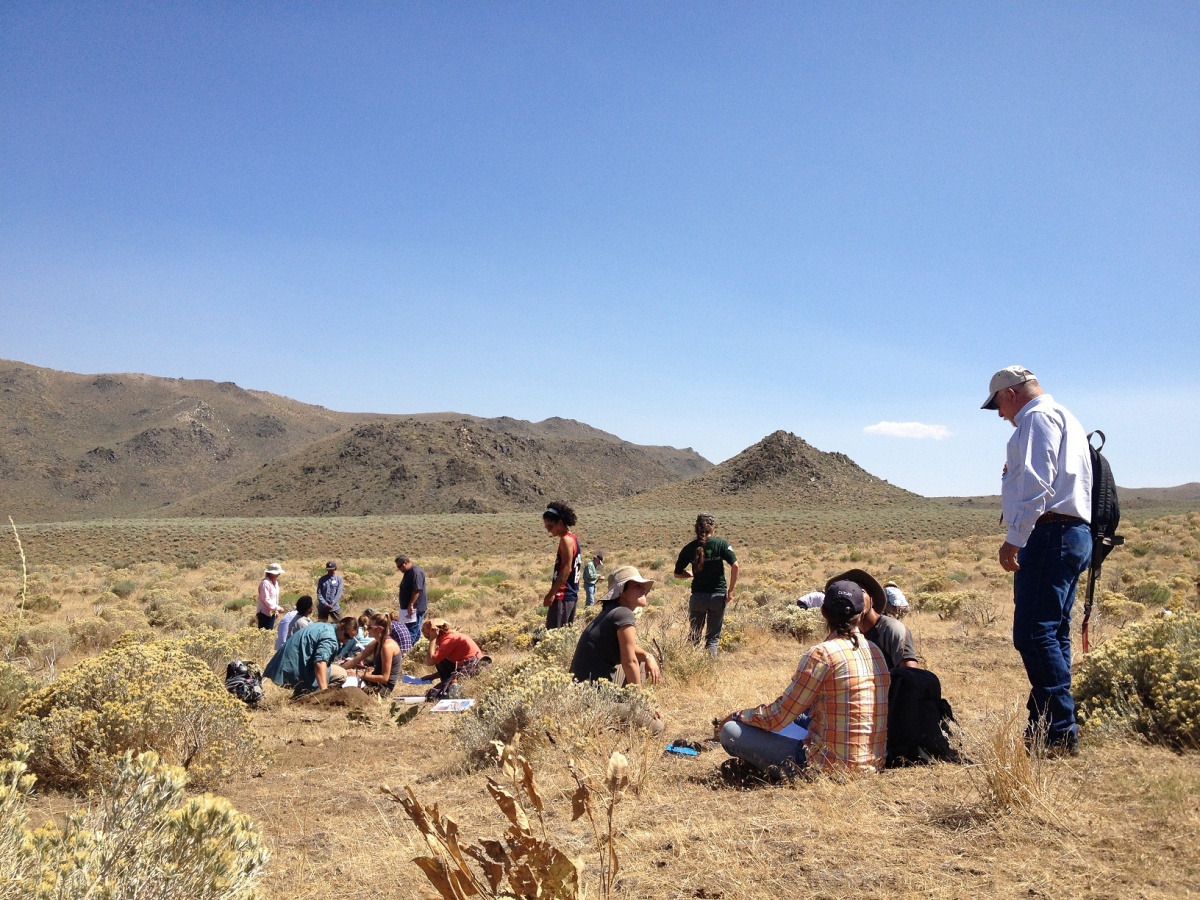
BLM Nevada Soil Program
Soils are the basic building blocks for good watershed health. They provide the medium for most plant life forms and serve to capture, store, and supply water to support plant growth. The ability of the soil to function in rangeland ecosystems is a factor of the soil’s physical, biological, and chemical properties. Natural events and various land management actions can affect these soil properties and alter the ability of the soil to support a healthy rangeland ecosystem.
Biological soil crusts are important components of desert soils and can be used as indicators of ecological health and physical disturbance.
Most BLM-managed lands within Nevada have existing soil surveys mapped by the Natural Resource Conservation Service (NRCS). Current work within the soils program includes partnering with NRCS to update existing surveys, providing training to staff on soil identification and developing ecological site descriptions.
Soil Project
BLM NV has partnered with the NRCS and the University of Nevada-Reno to develop State and Transition Models and Ecological Site Descriptions for upland rangeland ecological sites in Nevada.
Ecological sites are defined as “distinctive kinds of land with specific characteristics that differs from other kinds of land in its ability to produce a distinctive kind and amount of vegetation”. In order to fully understand the characteristics of an ecological site one must understand the ecological dynamics, which describes the changes to vegetation and soils and the causes of those changes. Details on the alternative states, ranges of variability within states, and the processes that cause plant community shifts within states as well as transitions among states are described in the text and diagram of a State and Transition Model (STM).
STMs are a means of communicating about plant succession, ecological thresholds, non-equilibrium dynamics, and functional and structural change in response to disturbances and management actions. STMs make up a major component of ecological site descriptions (ESD), which are reports that provide detailed information about a particular kind of land - a distinctive Ecological Site. ESDs provide a consistent framework for stratifying and describing rangelands and their soil, vegetation, and abiotic features. ESDs provide land managers the information needed for evaluating suitability of the land for various land-use activities, the capability to respond to various management activities or disturbance processes, and the ability to sustain productivity over the long-term.
This partnership provides the necessary tools for determining ecological potential and ecosystem functions for range habitat across the State and will be useful for managing public lands. STMs will facilitate planning efforts and will help ensure appropriate decision making by BLM for public land management decisions. Using scientifically developed and reviewed technical resources increases the reliability, acceptance, and credibility of BLM decisions.
